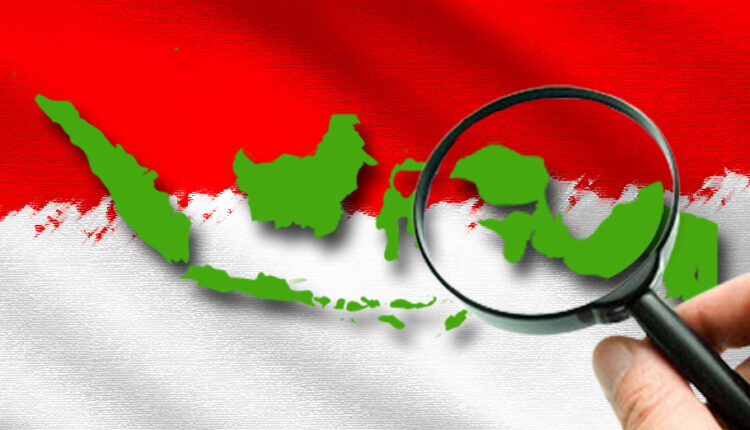By: Marlon Dani Latuihamallo )*
Development of the New Autonomous Region (DOB) in Papua is one of the government’s efforts to increase development in Papua. The development of new autonomous regions will of course be accompanied by the addition of public facilities which are expected to be able to improve quality in all aspects of life.
In order to accelerate Papua’s development aspirations, the Ministry of Home Affairs (Kemendagri) held a joint meeting with the Ministry of PUPR and the Ministry of Finance to discuss actions to accelerate infrastructure development in 4 new autonomous regions in Papua. The meeting was chaired by the Deputy Minister of Home Affairs, John Wempi Wetipo, in the meeting room of the Deputy Minister of Home Affairs, Jakarta, on Tuesday 20 June 2023.
On this occasion, John said that his party had coordinated with the Ministry of Public Works and Public Housing and the Ministry of Finance for funding readiness through the State Budget and needed data from the Ministry of Public Works and Housing regarding the details of the implementation of activities in the 2023 and 2024 fiscal years. Inter-ministerial coordination needs to be carried out because in its development it requires a multi-sectoral role from both ministries and agencies. (K/L).
Meanwhile, regarding the proposed subsidized housing to be used as employee housing, the Deputy Minister of Home Affairs has asked the Ministry of Public Works and Public Housing to submit the scheme or concept through the Ministry of Home Affairs. This is intended so that local governments can prepare and socialize to the public regarding the schemes created or offered by the Ministry of PUPR.
Previously, the Director of Housing for the Ministry of PUPR said that South Papua wanted subsidized housing as employees’ housing, with land prepared by the local government and construction costs in the state budget. Therefore, a FLPP scheme or subsidized housing at an affordable cost will be made if the land is prepared by the local government.
Plh. The Director General of Regional Development, Sri Purwaningsih has made minutes of agreements regarding activities that are financed through the APBD. The minutes have been signed by Dir SUPD II, Kasatgas and PJ Sekda in each new autonomous region, and the Directorate General of Community Development will collaborate intensely with PUPR for the preparation of the RC and land readiness as well as the master plan by the Regional Government.
The purpose of the division of the province in Papua seems to have been contained in Article 93 of Government Regulation No. 106 of 2021 concerning the Authority and Institutions for the Implementation of the Special Autonomy Policy for the Province of Papua. The regulation states that expansion is to accelerate equitable development, improve public services, community welfare, and the dignity of the indigenous Papuans (OAP).
Development in Papua must continue to be encouraged, because development in Papua is able to stimulate progress which also has an impact on improving quality in all things. Especially with the accelerated development of new autonomous regions, of course this will provide new opportunities for local sons to develop their potential. Moreover, the development of new autonomous regions aims to divide regional government tasks that are increasingly specific and focus on regions and local communities that are far from the center of regional government.
With the acceleration of development in Papua which has been continuously intensified by the Government of Indonesia since the era of President Jokowi’s leadership, this has of course changed the paradigm of development in Indonesia, where Jokowi has prioritized development in an Indonesia-centric rather than a Java-centric manner.
Previously, on November 17 2022, the DPR RI Plenary Session had approved the Draft Law (RUU) concerning the Formation of the Southwest Papua Province to become a Law (UU). On this occasion, member of Commission II DPR RI Guspardi Gaus hoped that the government would be able to make a special autonomy policy for Papua Province, not only be able to overcome conflict problems, but also be able to accelerate development.
On a different occasion, the Head of the MeePago Tribe Hans Mote stated that he fully agreed and would provide full support to the government for the division of a new autonomous region in the land of Papua. With the division of this new autonomous region, it is hoped that Papua will become more advanced and its development will be more evenly distributed in every line so that its people can progress too.
Progress following the development of the new autonomous regions is due to the fact that the community will be closer to public service centers, because with the development of the new autonomous regions, of course, it will be followed by the construction of public facilities such as terminals, health centers and so on, where the construction of these public facilities can of course be utilized by the community. So that the Papuan people do not have to travel far to get to the service facilities provided by the government.
Bappenas has reviewed that one of the arguments in favor of pemekaran is, among other things, the need to overcome the large distance between the government and the people’s span of control. Shorter spans of control and more equitable fiscal allocations should be the basic capital for improving services in each region.
Papua itself is an island that is wider than Java Island, it is only natural that Papua is divided into several provinces in order to accelerate development which will have an impact on increasing the welfare of the Papuan people. So that increasing welfare in Papua will also have an impact on many aspects, for example access to education or access to health facilities.
)* The author is a Papuan student living in Balikpapan
